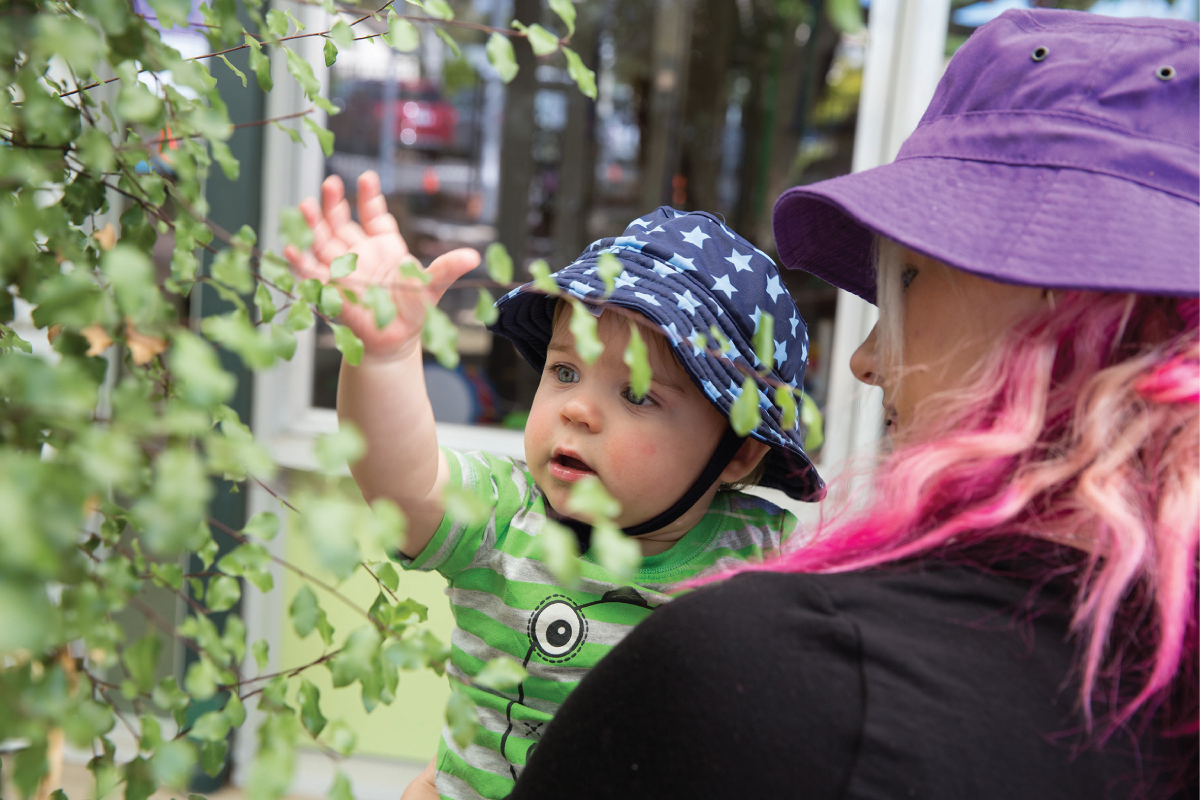Mixed-age grouping is also called family grouping in education and care settings and is simply where children are grouped in mixed ages rather than the more traditional way of grouping by age.
The current trend of smaller families, children spending more time in out of home care and family mobility means many children have little contact with children across a range of ages. The model of mixed-age grouping gives children opportunities to be part of a diverse group and, with educator support, become tolerant of others.
At Cooloon Children’s Centre Inc., a relatively small (45-place) long day care centre in Tweed Heads that comprises two playrooms, one cot room and one large shared yard, we have practised our model of mixed-age groups. In theory, children under three belong in one playroom and children over three in another but in reality, parents and children put the child’s bags into their allocated room and go into the playroom the child feels most comfortable in.
This is significant for us and is especially so with families with more than one child enrolled in the centre. At arrival time, having the support of a sibling can be very comforting when a parent or guardian is leaving and saying goodbye. Our staff numbers are above the recommended child–staff ratios to allow for this flexibility.
As more educators arrive, children are able to make further decisions as to where and who they will play with. They then have the choice to play outside and move between the outside spaces and the two playrooms. A shared progressive morning tea occurs before children return to their home rooms for lunch, rest, sleep or quiet activities for non-sleepers. As the afternoon unfolds children again move between the playrooms and shared yard.
We work like this from shared beliefs and values that support siblings to play with and alongside each other for long periods of time if they wish to and a view that older children and younger children learn from each other. Mixed-age grouping allows educators to really see children as individuals and meet their very different individual needs. There is an acceptance of different abilities.
Mixed-age grouping has great potential to support children’s social and emotional learning. Children who are settled and older often take on leadership roles and support those who are less capable and competent than they are, while at the same time building their own self-confidence and self-esteem. They model turn taking and sharing. Children with no younger siblings at home have opportunities to ‘be a big sister or brother’ and nurture and help others as well as form relationships with younger children.
‘Mixed-age grouping allows educators to really see children Mixed-age as individuals and meet their very different individual needs.’
Play is often more complex as older children extend younger children’s ideas or younger children follow the ideas suggested and contribute to the play.
Educators have great teaching moments as children learn about others. While in early childhood services there is naturally some conflict over toys or equipment, we do find that mixed-age grouping lessens this as the four-year-old has needs and interests that are often not shared by the two-year-old.
Mixed-age grouping allows less confident preschoolers to mix with younger children and over time build their confidence in mixing with same age and older peers. These children often find this less stressful as they are not expected to match their peers’ behaviours and abilities and so they avoid the competitiveness that does arise within groups of preschoolers. This also works well for children who have developmental delays as they are able to play with peers of similar abilities and interests and avoid some of the frustrations they may otherwise face.
We notice children’s language development is fostered as older children role model for younger children and surround them with language of different levels and complexity. They are able to modify their language, behaviours and expectations based on the ages and understandings of the other children. In turn they become adept at ‘reading’ younger children’s non-verbal clues and responding accordingly.
Educators adapt the curriculum and their teaching strategies to support children’s development and maximise the educational benefits for the group.
As educators we are aware that not everyone shares our thinking and ways of working. Many see risks and these include fears that older children may overwhelm younger children, older children may be under stimulated as the range of experiences is limited and younger children inhibit their plans, or younger children may be influenced by older children and grow up too quickly. We have found these fears are no different to other ways that children are grouped, as even in children who are grouped by age there is a wide range of skill level, maturity level and experiences that impact on how and where children play and how they interact and get along with others.
In order for our educators to ensure all children are safe and able to participate in a range of experiences, we have had to design our play spaces to meet these competing needs.
None of our climbing equipment is higher than 500 centimetres, but older children have opportunities to scale scrambling nets, or climb a tree, where the lowest foothold is too high for younger, smaller children to reach and preschoolers are regularly taken to the adjacent park for physical activity, ball games etc. We have designed mounds in the grassed area so toddlers can crawl or climb up and ‘feel on top of the world’.
We have created outdoor rooms and alcove areas so even very young babies can be outside but not in the spaces occupied more vigorously by older children. We have an assortment of wooden fences that can be moved and re-used to create spaces, both indoors and outdoors, so older children can play safely with toys such as Lego and be involved in woodwork experiences.
We work within a primary caregiving system and working with mixed ages gives all educators the opportunity to understand and relate to all children across the service. It does mean while educators have primary responsibilities for particular children and playrooms, they also have a shared responsibility for all children, the resources and the environment they work in.
Working this way allows us to easily see the potential for children’s learning in all that we do. We focus on relationships across the service and see the potential in the routine times of the day. We follow children’s interests and needs, plan for the groups as a whole in an across-service, holistic way with a great cross-fertilisation of ideas for intentional and spontaneous experiences for children.
It works well for us.
This article was originally published in Every Child Magazine.













Thank you so much for the article. It was very informative. You have written in a simple and easy to understand manner. Thank a ton.
Hello, Judy.
So this evening, I have decided to travel to my parents house, that parent my younger 6 sisters. Two of which are in grade prep, and grade two.
At the dinner table this evening, they had told me that they’re primary school does not allow the children to play in mixed age groups, that the teachers tell them off, and punish them. They don’t allow my sisters, aged 5 & 7 to play together. This school is only a P-4 campus, in which the student attend high school in year 5.
But back to my main reason for comment, surely this can’t be a legality that schools have to abide by? My 7 year old sister doesn’t have many friends, given that she suffers from ASD & Dyslexia, and in the home environment, they look out for each other.
Hi Judy wondering if you could please send me some planning program examples of how you go about planning for the mixed age group as not sure about how to tackle it
Thanks
Mel
Hi THere,
Please give me an answer of this question. will be very helpful.
1) Decribe your understanding of the
planning and assessment cycle to me?
how do you tie the WA kindy curriculum
into your planning?
( demonstrating role suitability and
knowledge)//////
How do you find mixed age group centres in a particular area?
I find it disappointing when the author doesn’t respond to comments. Not particularly well mannered.
I would be interested in looking at some planning samples also:)
Hi Judy,
I would be very interested in viewing some examples of your mixed age grouping programmings and plans..
Thank you:)
[…] Mixed-age grouping – why we love it! – The Spoke […]